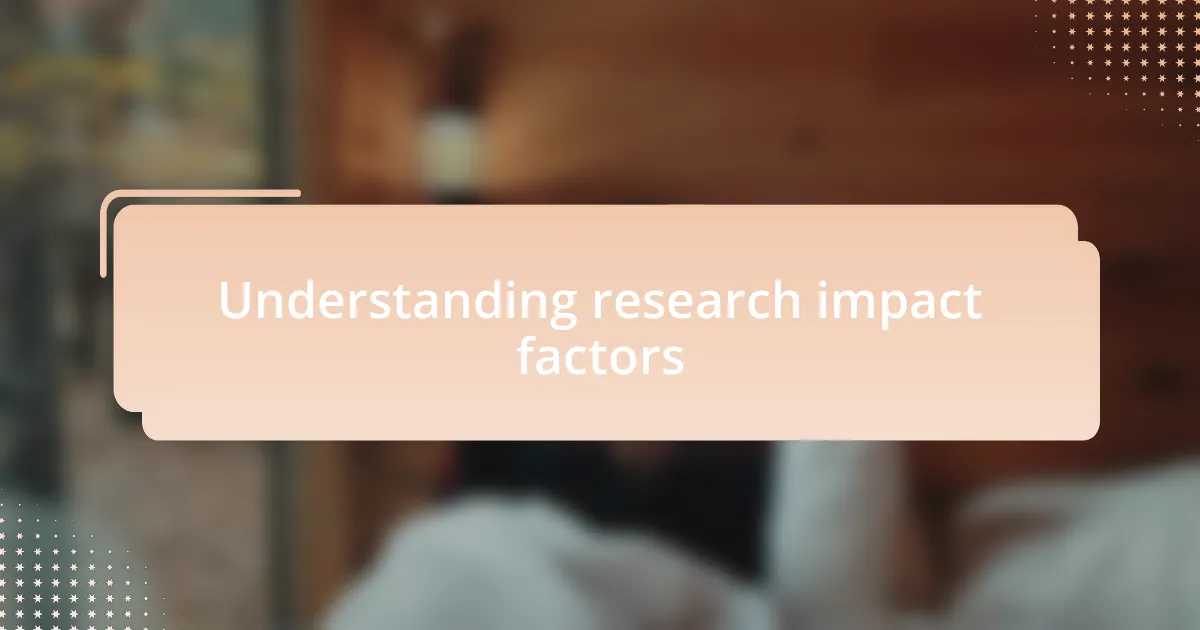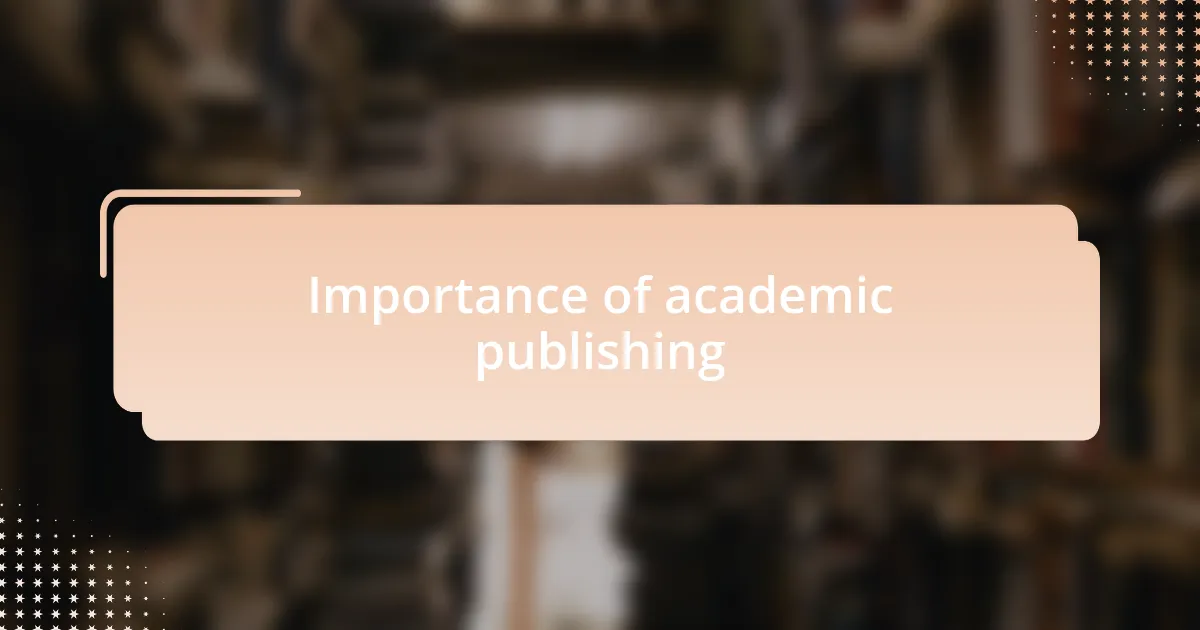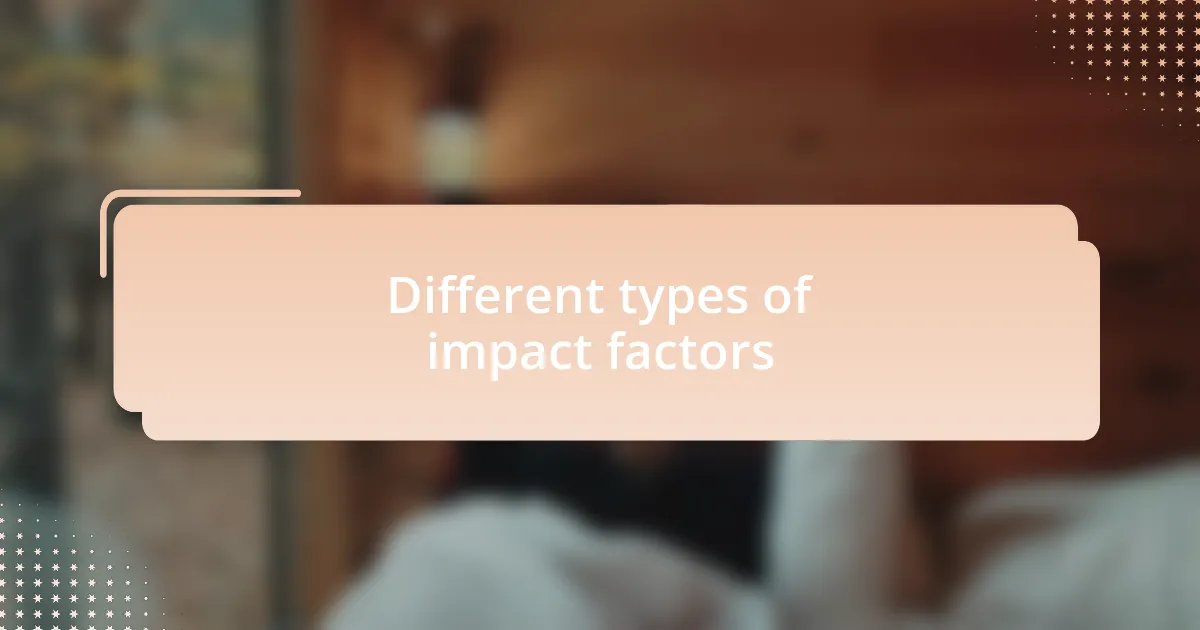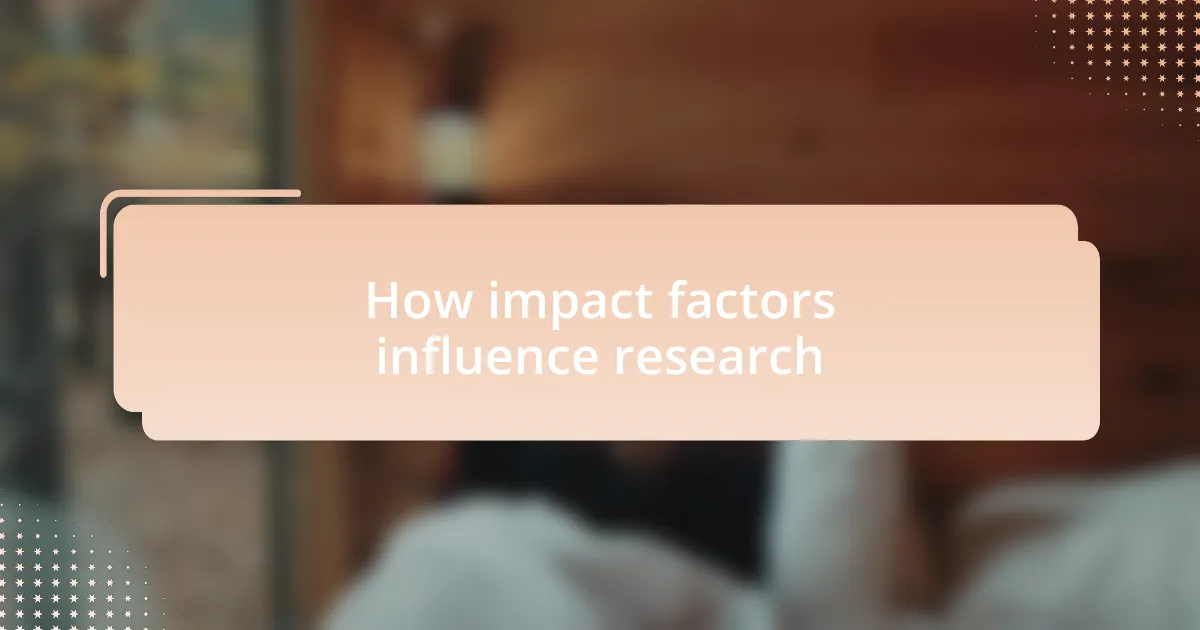Key takeaways:
- Research impact factors measure the influence of academic journals but can pressure scholars into prioritizing publication prestige over innovative research.
- Academic publishing shapes the discourse in various fields and fosters collaboration, emphasizing the importance of journal reputation alongside content quality.
- Different types of impact factors, such as Journal Impact Factor and Altmetrics, highlight the need for a broader understanding of research influence beyond traditional metrics.
- The reliance on impact factors can stifle creativity, as researchers may alter their topics to align with high-ranking journals, potentially sacrificing genuine exploration.

Understanding research impact factors
Research impact factors are metrics that attempt to measure the influence and reach of academic journals and, by extension, the research published within them. I remember the first time I encountered these figures; I was intrigued yet confused. It made me ponder: why do some journals boast high impact factors, while others struggle to gain recognition?
As I delved deeper into the metrics, I realized that impact factors are not just numbers; they reflect the citations a journal receives within a particular timeframe. This led me to question how these citations truly represent the quality or importance of the research. Are we valuing the right aspects of our scholarly work, or merely chasing numbers that don’t align with our passion for innovation?
Knowing how these factors can shape an academic’s career choices is eye-opening. I’ve seen colleagues feel pressured to publish in high-impact journals, sometimes at the expense of exploring unconventional or interdisciplinary ideas. Does chasing a higher impact factor inhibit creativity in research? It’s a thought worth considering as we navigate the complexities of academic publishing.

Importance of academic publishing
Academic publishing plays a pivotal role in disseminating knowledge, shaping the discourse within various fields. Reflecting on my own experiences, I remember how publishing in a respected journal provided me an opportunity to share my research with a broader audience. It’s a thrilling yet daunting task, knowing that your work can influence peers and shape future studies.
Moreover, publishing contributes to the academic community’s credibility. I once discussed with a colleague how being part of high-quality journals set benchmarks for the integrity and rigor of research. This made me wonder: how much weight should we give to the journal’s reputation compared to the content itself? It’s a debate that many scholars grapple with, as they strive for a balance between prestige and impactful work.
Importantly, academic publishing fosters collaboration and innovation. I recall a project born from a conversation sparked by a published paper. It ignited a series of discussions that led to new research initiatives. How often do we overlook the power of published works to catalyze unexpected partnerships? This reinforces the essential truth that academic publishing is not just about individual achievements but about nurturing a community of thinkers that collectively advance knowledge.

Different types of impact factors
When we talk about impact factors, it’s important to recognize that not all are created equal. For instance, the Journal Impact Factor (JIF) has been a benchmark in academia, reflecting the average number of citations to articles published in a journal. I remember when I chose where to submit my work; the JIF influenced my decision significantly, making me question how much it weighed against the merit of my research.
There’s also the Article Influence Score (AIS), which offers a complementary perspective. It’s calculated based on how many citations articles in a specific journal receive, adjusted for the number of articles published. During a recent conference, a presenter emphasized the importance of this metric, arguing that it paints a clearer picture of a journal’s influence over time. It left me pondering: do we often overlook such nuanced metrics in our quest for recognition?
In addition to these, Altmetrics have emerged as a fascinating addition to the conversation. They track the online engagement and dissemination of research, encompassing social media mentions and other forms of public interaction. I recall publishing a paper that quickly gained traction on Twitter and blogs, and it was exciting to see that impact reflected in real-time. Could it be that the breadth of influence a research piece has online is just as important as its academic citations? These varying types of impact factors challenge us to think beyond traditional measures and consider the broader implications of our work.

How impact factors influence research
When thinking about how impact factors influence research, I often reflect on the pressure they create for academics. I’ve seen colleagues modify their research topics to align with areas that promise higher journal impact factors, raising an important question: are we sometimes sacrificing genuine exploration for publication prestige? This dynamic can stifle creativity and lead to more homogenized research.
Additionally, impact factors can shape the perception of research by funding bodies and institutions. I once submitted a grant proposal, and the reviewers immediately highlighted the journals I had published in as crucial indicators of my work’s significance. It made me realize how much these metrics not only validate a researcher’s efforts but also steer the direction of future studies. Does the reliance on these numbers discourage innovative ideas that might not fit neatly within high-ranking journals?
Moreover, I have found that aspiring researchers often weigh journal rankings heavily when deciding where to publish their findings. A friend of mine hesitated to share a groundbreaking study in a lesser-known journal, fearing it would go unnoticed. This hesitation is common, prompting us to think: how much do we let impact factors dictate our academic journey, even at the potential cost of broader insights? It’s clear that while impact factors play an essential role in the landscape of research, they also come with a complex web of implications for both individual researchers and the scientific community as a whole.